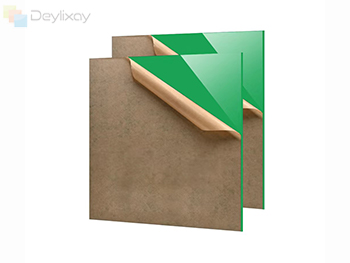Selecting the correct thickness for your Acrylic sheet (commonly known as plexiglass) or polyurethane sheet is one of the most critical decisions in project planning. Getting this right means the difference between a professional, durable result and a project that fails prematurely. While these two materials share some similarities, their different mechanical properties demand distinct approaches to thickness selection. This comprehensive guide cuts through the confusion to provide clear, practical advice for choosing the perfect thickness for any application.

Understanding thickness measurements is your first step. Plastic sheets are typically measured in inches for thicker sheets (e.g., 0.25", 0.5") and millimeters for thinner gauges (e.g., 3mm, 6mm). Avoid relying on the term "gauge" as it can be inconsistent between manufacturers. Instead, always work with precise inch or millimeter measurements for accuracy. The golden rule for both materials is considering span and load—the unsupported distance the sheet must cover and the weight or pressure it must bear. A small picture frame has completely different requirements than a large aquarium or industrial machine guard.
For Acrylic sheets, specific thickness ranges suit particular applications. Thin gauges (1mm-2mm) work for picture frame glazing and craft projects but offer minimal structural support. Light-duty 3mm (1/8") sheets serve as versatile all-rounders for small shelves and display cases with spans up to 24 inches. Medium-duty 4.5mm-6mm sheets provide significantly increased structural integrity for larger shelves, standard aquariums, and partitions, handling spans up to 36 inches. Heavy-duty 9.5mm-12mm sheets suit large aquariums, security windows, and architectural features, while industrial 19mm+ thicknesses serve specialized applications like bullet-resistant barriers. Polyurethane thickness selection follows different principles due to the material's inherent flexibility and impact resistance. A 1/4" thick polyurethane sheet will be far more flexible than its acrylic counterpart, meaning you'll often need greater thickness to achieve similar rigidity. However, for impact absorption in applications like machine guards, a thinner 6mm polyurethane sheet can outperform much thicker acrylic because it absorbs energy instead of shattering.
Before purchasing material, ask these five key questions: What is the largest unsupported area? What weight or pressure will it face? Will it be used horizontally or vertically? What is the desired "look and feel"? What is your fabrication capability? The answers will directly point you toward the appropriate thickness range. Additionally, follow these pro tips for best results: When in doubt, choose the next thicker size—the marginal cost increase is cheap insurance against project failure. Remember that a well-designed frame can allow using a thinner, more cost-effective sheet since the frame carries the load. Account for material "creep"—both acrylic and polyurethane can slowly sag over time under constant load, so factor this in for permanent installations. For critical projects, always test a small piece of your chosen thickness under simulated conditions before committing to the full sheet.
The final verdict is clear: successful material selection requires understanding both your project requirements and the material properties. For acrylic sheets, prioritize span and load calculations using the standard application guide as your starting point. For polyurethane projects, focus on whether you need flexibility or rigidity, and remember that impact resistance doesn't always require maximum thickness. By applying these principles, you'll avoid both the safety issues of under-specifying and the unnecessary expense of over-specifying, ensuring your project stands the test of time while staying within budget.
 English
English Español
Español Portugues
Portugues Pусский
Pусский Français
Français Deutsch
Deutsch 한국어
한국어 العربية
العربية Italiano
Italiano Nederlands
Nederlands Ελληνικά
Ελληνικά Svenska
Svenska Polski
Polski ไทย
ไทย Türk dili
Türk dili हिन्दी
हिन्दी Indonesia
Indonesia Melayu
Melayu Tiếng Việt
Tiếng Việt dansk
dansk Magyar
Magyar қазақ
қазақ বাংলা
বাংলা עִברִית
עִברִית မြန်မာ
မြန်မာ українська
українська norsk
norsk Gaeilge
Gaeilge Română
Română ພາສາລາວ
ພາສາລາວ Filipino
Filipino Suomalainen
Suomalainen slovenský
slovenský o'zbek
o'zbek Igbo
Igbo Hrvatski
Hrvatski Zulu South Africa
Zulu South Africa Afrikaans isiXhosa
Afrikaans isiXhosa lëtzebuergesch
lëtzebuergesch тоҷикӣ
тоҷикӣ नेपाल
नेपाल Eesti
Eesti Yoruba
Yoruba Монгол
Монгол ខ្មែរ
ខ្មែរ 中文(繁体)
中文(繁体) Afrikaans
Afrikaans













 電話
電話
コメント
(0)